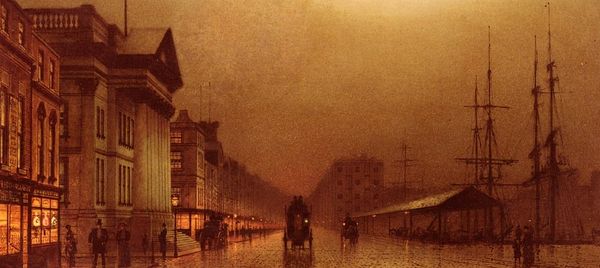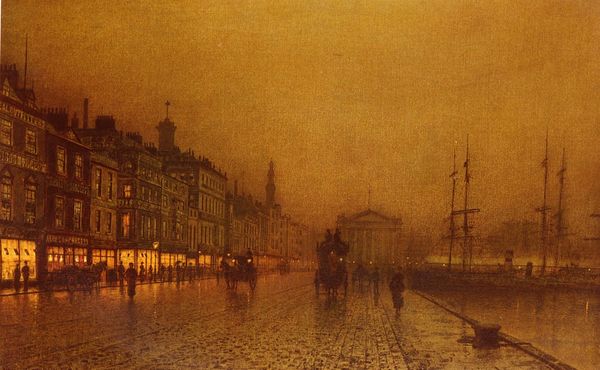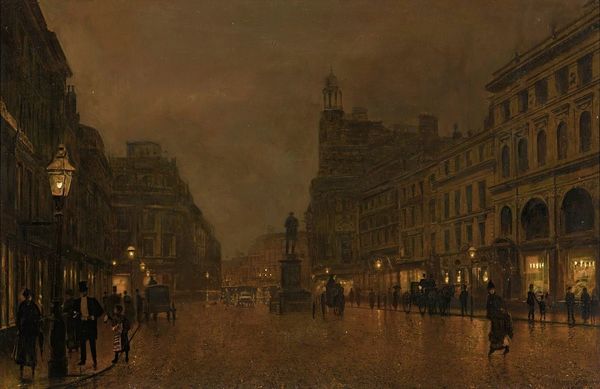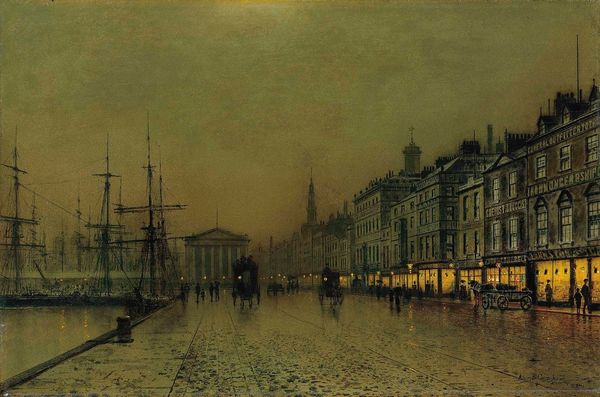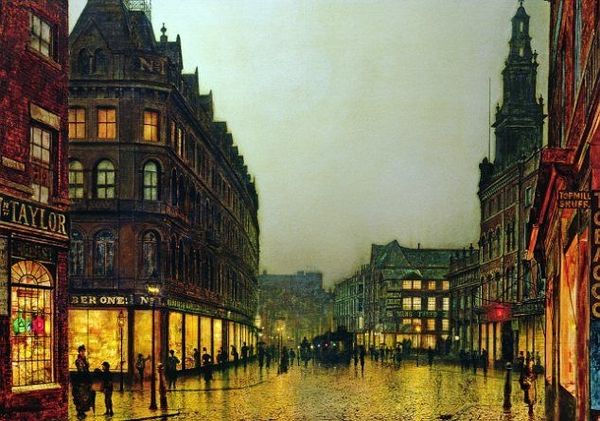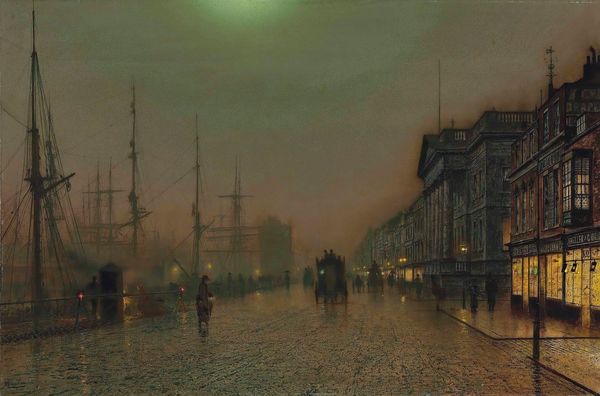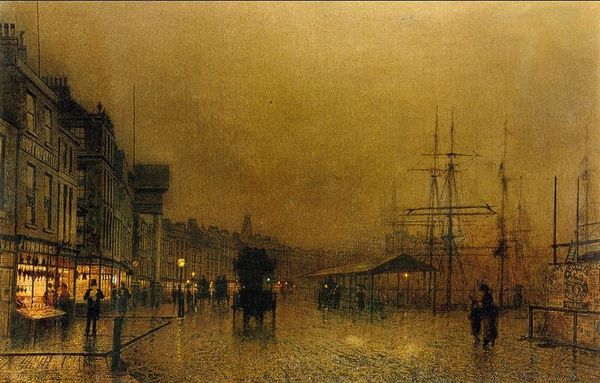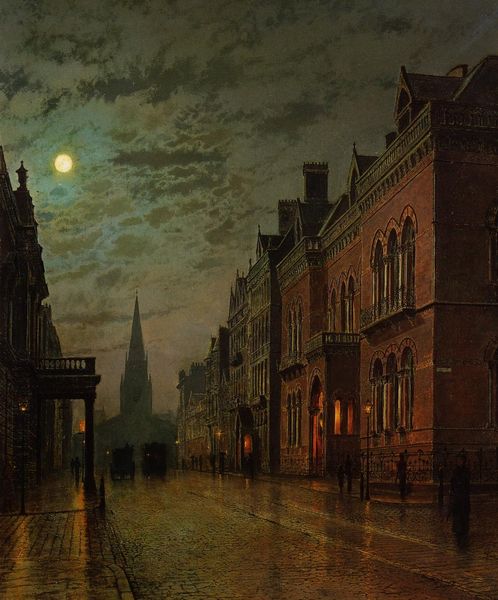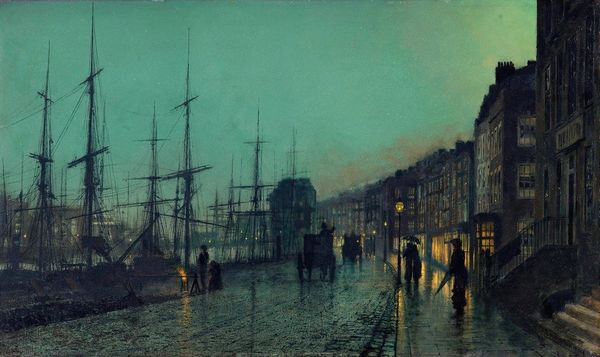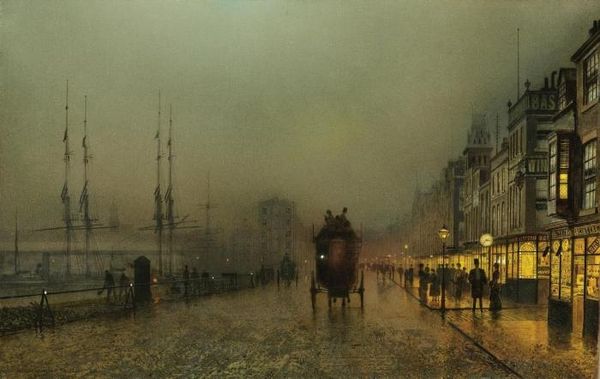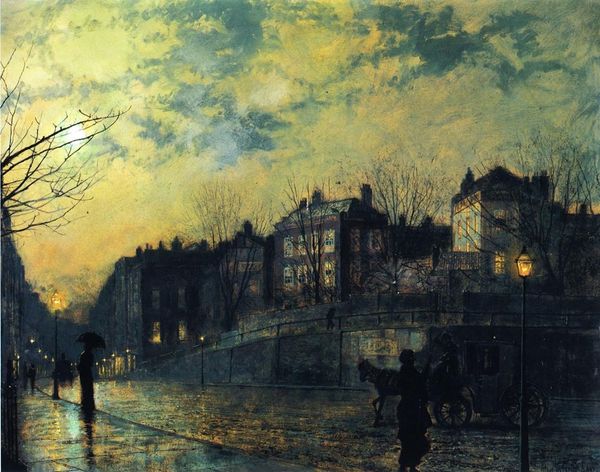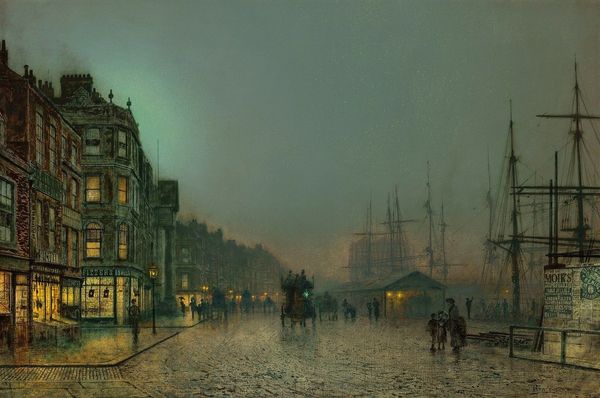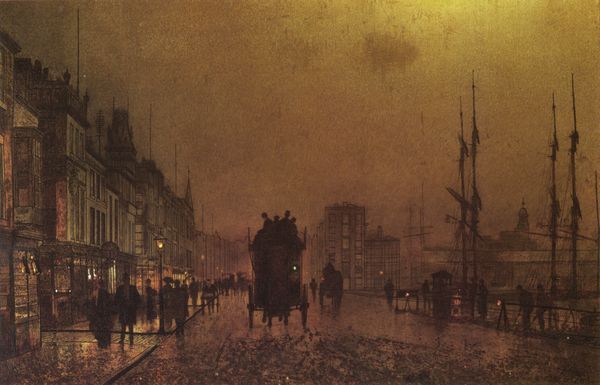
Copyright: Public Domain: Artvee
Editor: This is John Atkinson Grimshaw's "Boar Lane, Leeds by lamplight," painted in 1881. It's oil on canvas, and I'm immediately struck by the contrast between the warm glow of the street lamps and the cold, damp atmosphere of the city at night. What do you see in this piece? Curator: I see a powerful exploration of modernity and memory. Grimshaw's fascination with capturing gaslight in this piece isn’t merely representational; it’s about the dawn of the industrial age and its psychological impact. The lamplight becomes a potent symbol. Notice how the artist positions them. What kind of emotional impact do they have? Editor: I suppose the lamps give a sense of hope against the darkness? Or maybe loneliness, since the figures seem isolated even with the light. Curator: Precisely. And think about the city itself. It appears solid, yet also ethereal, almost dreamlike, shrouded by the mists. This echoes the rapid urban growth of the time, promising progress but also fostering anxieties about anonymity and alienation. Does the architecture evoke anything specific for you? Editor: Well, the buildings feel very imposing and solid, maybe representing stability but also, as you said, alienation because they look identical. It also kind of reminds me of theatre stage. Curator: You've struck upon a key observation. The theatricality in his work and that strong connection to stage design. Grimshaw created a compelling drama—one steeped in the rich symbolism of light, shadow, and the modern urban experience. In it we can glimpse reflections of ourselves. Editor: It's amazing how many layers there are beneath the surface! I definitely appreciate the painting more after understanding the symbols. Curator: Indeed. The painting serves as a cultural mirror.
Comments
No comments
Be the first to comment and join the conversation on the ultimate creative platform.

